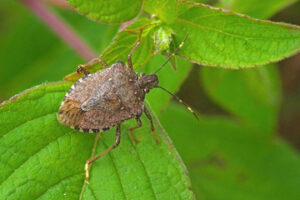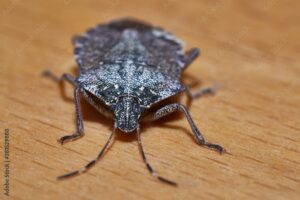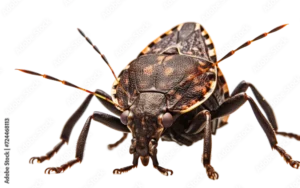Your Ultimate Guide to Eliminating Stink Bugs: A DIY Approach
It’s that time of year again – the air is crisp, the leaves are changing, and stink bugs are looking for a warm place to spend the winter, often choosing our homes as their cozy retreat. For many, these colorful but notorious pests have turned into the bane of their existence. If you’ve found stink bugs parading around your home or garden, you’ll know the particular combination of eww and ugh that comes with it. Fortunately, dealing with stink bugs doesn’t always have to involve chemical warfare or expensive professional help. Here’s your ultimate guide to addressing these pesky invaders with a DIY mindset.
Understanding the Stink Bug
Before we wage war on the latest threat to our domestic tranquility, it’s important to understand the enemy. The brown marmorated stink bug (Halyomorpha halys) is an invasive species that has, unfortunately, found itself thriving in many parts of the United States, particularly the mid-Atlantic region. They are called ‘stink bugs’ for a notable and not-so-well-received defense mechanism they exhibit when threatened – a pungent odor that deters predators.
Stink bugs feed on a variety of plants and can be highly destructive to crops, making them a significant concern for farmers as well as gardeners. However, when stink bugs enter a home in search of warmth during the colder months, they become more of a nuisance pest than a true threat. But, make no mistake, their presence can be vexing enough to warrant action.
Prevention Is Key
Stopping stink bugs before they have a chance to make themselves at home is much easier than evicting them once they’ve moved in. Here are some strategies to prevent them from entering your living space:
Seal Entry Points
Stink bugs are small and can get through tiny openings, so it’s crucial to seal up any potential entry points such as gaps around windows, doors, vents, and utility penetrations. Use caulk to seal cracks and install weather stripping to provide a snug fit for doors and windows.
Maintain Your Garden
If you have a garden, keep plants trimmed away from your home’s exterior to remove the bridge between the two habitats. Also, consider investing in mesh screens to cover attic and floor vents, making it harder for stink bugs to find a way inside.
Reduce Exterior Lighting
Stink bugs are attracted to light and will often congregate around lit areas at night. By reducing the exterior lighting or switching to yellow bulbs that are less attractive to insects, you can decrease the number of stink bugs that gather near your home.
Keep Your Home Cool
Stink bugs are drawn to warmth, so keeping the temperature in your home relatively cool can deter them from congregating. Additionally, use fans to blow air near windows and doors – this can make it harder for stink bugs to land and crawl inside.
Follow and subscribe to our YouTube channel for tons of Great information.
Websiteconstructionconsumeradvocacyinstitute.com
Podcastanchor.fm/galloway
www.youtube.com/@ConstructionConsumerAdvocacy
Trapping and Removing Stink Bugs
If the preventative measures fail, all is not lost. Trapping and removing stink bugs can be an effective and non-toxic method to keep their numbers in check.
DIY Traps
You can make simple traps at home using a variety of materials. A common trap uses a mixture of water, dish soap, and a light source to attract and drown stink bugs. Place the trap in areas where stink bugs are seen, like near windows or in attics.
Manual Removal
For a direct approach, use a tissue or similar item to remove stink bugs one by one and place them outside. This method can be time-consuming but is effective in reducing immediate numbers.
Vacuuming
For those who prefer to maintain a bit of distance, a vacuum cleaner with a long wand attachment is an excellent tool for collecting stink bugs. Remember to dispose of the bag or empty the canister immediately to prevent the odor from dispersing.
Natural Repellents
If you’re looking for more hands-off ways to keep stink bugs out, consider these natural repellents:
Essential Oils
Stink bugs are repelled by the scent of certain essential oils. Mix a few drops of oil such as peppermint, cinnamon, or citrus with water and spray it around window and door frames.
Plants
Growing stink bug-repelling plants like catnip, lavender, and marigolds near entry points can offer a fragrant barrier.
Diatomaceous Earth
This powdery substance can be sprinkled in areas where stink bugs are likely to crawl, such as window sills and door thresholds. It sticks to their bodies and dehydrates them, ultimately killing them.
Chemical Control
For those facing severe infestations or who prefer chemical solutions, there are options available. However, it’s crucial to use them with caution and according to the product labels.
Insecticides
There are various insecticides on the market specifically formulated to kill stink bugs. Be sure to select one that’s labeled for indoor use if you’re using it inside your home, and always follow application guidelines.
Professional Assistance
If you’re not comfortable using insecticides or the infestation is particularly severe, it may be best to call in a pest control professional. They can apply the appropriate treatment and often offer warranties on their work.
Post-Invasion Cleaning
After you’ve dealt with the stink bug invasion, there are a few things you can do to clean up and prevent future issues:
Odor Elimination
The pungent smell stink bugs release can linger in your home. Clean the areas where stink bugs were present with a mixture of water and white vinegar to neutralize the odor.
Maintenance
Keep up with the preventive measures listed above and conduct regular inspections for new entry points.
Record Keeping
Keep a log of when and where you find stink bugs within your home. Over time, patterns may emerge, helping you target entry points more effectively.
Conclusion
Stink bugs can indeed be a formidable foe, but with the tactics outlined in this guide, you can reclaim your domain and keep these smelly interlopers at bay. Remember, persistence is key. Keep up with your chosen method of control, and don’t be discouraged if there are hiccups along the way. With a DIY attitude and a bit of patience, you can win the battle against stink bugs and enjoy your home and garden without their unwelcome presence.
Follow and subscribe to our YouTube channel for tons of Great information.
Websiteconstructionconsumeradvocacyinstitute.com
Podcastanchor.fm/galloway


